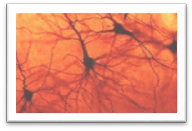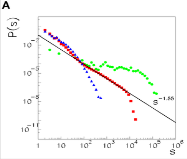

BIOPHYS
Scientific targets:
Framework. The IS Biological Theoretical Physics focus on modelling and discovering emergent properties of biological systems, encompassing molecular factors, genomes, cells and organs, whose theoretical description is only possible at the system level, by using innovative methods and ideas coming from theoretical physics. This is a novel, key research area in physics, triggered by the development of new quantitative, high-throughput experiments in biology and in particular neuroscience.
Research Units: Bari, Milano, Napoli (nation. coord), Pisa, Roma II, Salerno, Torino, Trento.
Local activities:
The goals of the Salerno research unit inside BioPhys is the study of emerging complex dynamics in neural systems [1]. We will focus on brain critical phenomena and the role of connection topology, synaptic plasticity, and stocasticity in the transition from a critical state with up-down alternation to a super-critical or subcritical regimes, in models of cortical neural systems. Neural avalanches and features of criticality are also investigated in EEG data recorded during sleep, in collaboration with Sleep Center of Parma University.
[1]Chialvo, D. R., 2010 Emergent complex neural dynamics. Nat. Phys. 6, 744–7
Main equipment:
The activity of the Salerno unit is mostly within numerical simulations and software development. The group has a small computing center, a Workstation with CUDA NVIDIA, for GPU-accelerated Deep Learning applications and dedicated software (Lab of Neural Networks “Maria Marinaro”).
The local group:
S. Scarpetta ( Unisa) , A. de Candia (Unina), M. Angiolelli (Unisa), G. Messuti (Unisa).
Local P.I.:
Silvia Scarpetta silvia.scarpetta@sa.infn.it